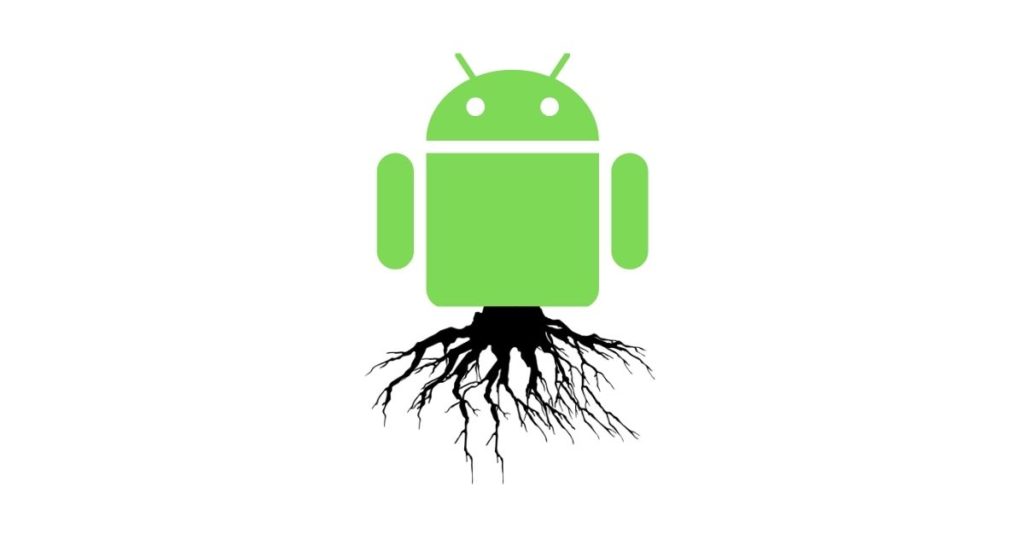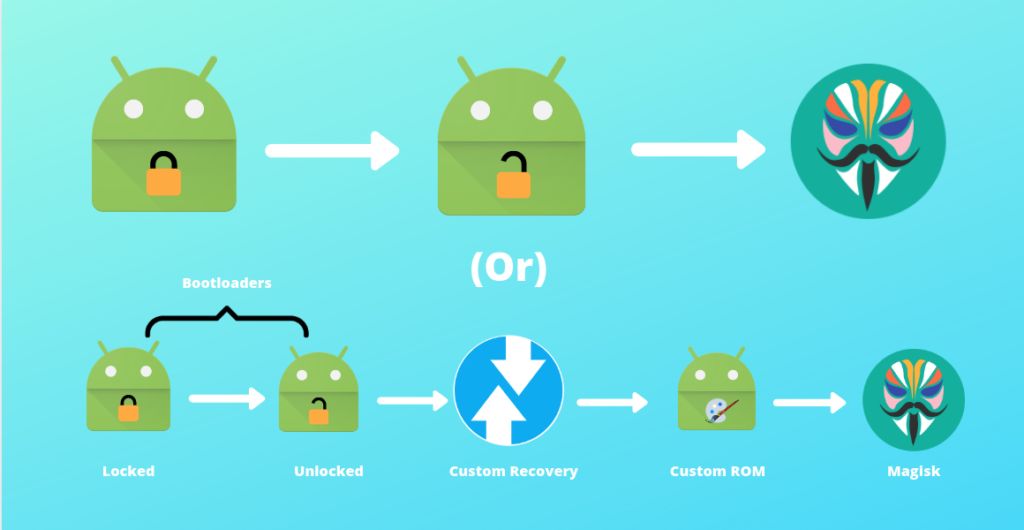What Is Rooting A Phone, Jailbreaking, And Custom ROM?

A lot has changed in the smartphone market in the past decade, and while enthusiasm for modern tech is prevalent, there’s a lot of stuff that people miss out on. In this article, let’s look at what Rooting a phone, Jailbreaking, and custom ROMs are and what you can do with them.
What Is Rooting A Phone?
Rooting is derived from the term Superuser. At its heart, Android uses the Linux kernel. Like how you need superuser permissions in Linux to install applications and access hidden files in storage, Rooting a phone allows you to access crucial directories in Android.

Device manufacturers have restrictions on what you can access on your smartphone. A rooted phone gives you access to almost any component of the device and allows you to fiddle with it. To better understand what I mean, let me give you an analogy.
Imagine you rented half of the rooms on the ground floor of a one-story building. But, you feel that space isn’t enough so you can ask the owner to give access to the remaining rooms on the ground floor by offering him extra money. Getting access to all the rooms on the ground floor is rooting, and offering extra money are things that you’ll end up sacrificing, which we’ll talk about later in the article.
What Can You Do After Rooting Your Phone?
Literally anything! You can access and alter almost all the components of Android on a Rooted phone. Heck! You can even upgrade your device to the latest Android version even if your device stopped receiving updates long ago. However, you will first need to unlock your device’s bootloader which we’ll talk about later.

And the list doesn’t end there. Rooting also allows you to customize your device and add new features that your device didn’t ship with. For example, if you always wanted to have stereo speakers for a better audio experience, all you need to do is “flash” a mod, and you’ll have new features within minutes.
Rooting can also allow you to overclock the CPU, remove all the unnecessary applications (bloatware), and increase the battery life with some tweaks.
How Do I Root My Phone?

How to root an Android phone? One of the most widely used software to root Android is Magisk, developed by John Wu. SafetyNet in Magisk allows you to bypass Google’s root detection system and use banking and other apps without any hassle.
Magisk also allows easy downloads and installation of modules to add new features and to enhance your overall Android user experience if you’re a customization buff.
Bootloader… What?
Android root requires an unlocked Bootloader. A Bootloader is a program responsible for firing up the kernel on a device. It acts as a barrier between you and the kernel and is responsible for binding its root of trust. Once you unlock the Bootloader, that trust will be gone, and you’ll end up sacrificing your device’s security. Unlocking the bootloader will also factory reset your device.

Most mobile phone manufacturers are against unlocking the bootloader and Android root. Hence, if you try unlocking the bootloader, you might end up losing the warranty.
Also Read: How To Unlock Bootloader On Xiaomi Device?
Are There Devices That We Cannot Root?
One of the main reasons why Android is loved in the open-source community is because of the endless customizations. Manufacturers like Nokia (HMD Global) and Huawei have disappointed many enthusiasts by shipping devices with permanently locked bootloaders, which means you cannot root a Nokia or Huawei device.
What Is A Custom ROM?
Android’s open-source nature allows everyone to access its code and own it. This has resulted in device manufacturers modifying the the code and delivering a version of Android that looks and sometimes even works a lot differently from the Vanilla Android. Today, almost all the manufacturers except Google (Pixel Lineup) and Nokia deliver their custom UIs on top of Android.

While UIs like OnePlus’ Oxygen OS feel better than your average vanilla Android, there are other UIs that are overwhelmingly customized and shipped with a lot of bloatware and unnecessary optimizations enough to ruin your Android experience.
That said, custom ROMs are perfectly legal to download and flash.
What Is A Custom ROM?
Custom ROM is a customized Android version for specific devices that allows you to get the most out of your Android device. Think of it as a modified version of a car with a different paint job (Different UIs) and components fitted (New features) to make your driving experience better while still using the same engine (Linux Kernel).
To install a custom ROM, you need to unlock the bootloader first and install a custom recovery. One of the most popular custom recoveries is TWRP. That said, developers only prefer to develop ROMs for popular devices. You can find many Android custom ROMs for your device on one of the world’s largest developer portals, XDA.
Is Rooting Safe And Is It Worth It?
Yes. Rooting invites you to experience a stream of endless possibilities and allows you to have a better overall experience. It might not be the best thing to do if you’re enjoying your new phone, but you should definitely do it once your phone gets old.
The only downside of rooting is, it can also be disastrous as you might end up destroying your phone (hard bricking) if you don’t follow the installation instructions properly.
What Is Jailbreaking A Phone?
Much like rooting, Jailbreaking is a way to remove software restrictions set on iOS by Apple, done through Kernel patches. By jailbreaking your Apple device, you can install applications that are not available on the App Store and activate many customizations.

While you need an unlocked bootloader before you can go ahead and root your Android device, Jailbreaking is done on a device with a locked bootloader, thereby making the concept totally different from Rooting.
What Can You Do By Jailbreaking Your iPhone?
So, what can a Jailbroken iPhone do? It allows you to customize your device and install unofficial software that unlocks carrier-locked iPhones. If you’re jealous of Android users being easily able to download pirated content while you buy everything from the App Store, you can jailbreak and do the same on your iPhone.
How To Jailbreak An iPhone?
Like Rooting, Jailbreaking also voids your warranty, and depending on the apps you decide to install, it can also slow down your iPhone. Not to mention, you might also end up bricking your phone during the process.

Cydia is one of the most popular third-party apps that users can use to acquire the rights to modify their jailbroken iPhones.
Would you Root/Jailbreak/Install a Custom ROM on your phone? Would you be interested in reading guides on rooting or installing a custom ROM on your phone? Let us know in the comments section below.
FAQ
Yes. As soon as the Apple executive plugs-in the device to a Mac, it will show that the device is jailbroken.
It depends on your taste. If you would like to customize every aspect of Android — Resurrection Remix, Evolution X, and AOSIP are some of my most favorite ROMs for the immense amount of customization options they offer.
If you want to have a clean and polished — vanilla AOSP experience, Paranoid Android, Pixel Experience, and Lineage OS are the ROMs you should be looking at.
Absolutely, if you’re bored of using your stock default UI, you should definitely try custom ROMs. However, installing one doesn’t make sense if your phone is very new, as you might end up voiding your warranty.






